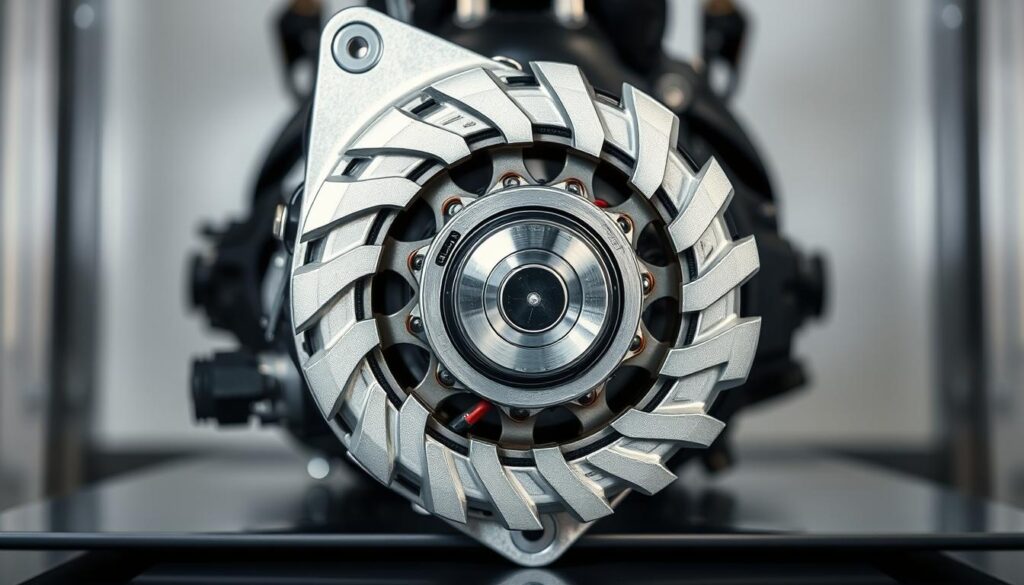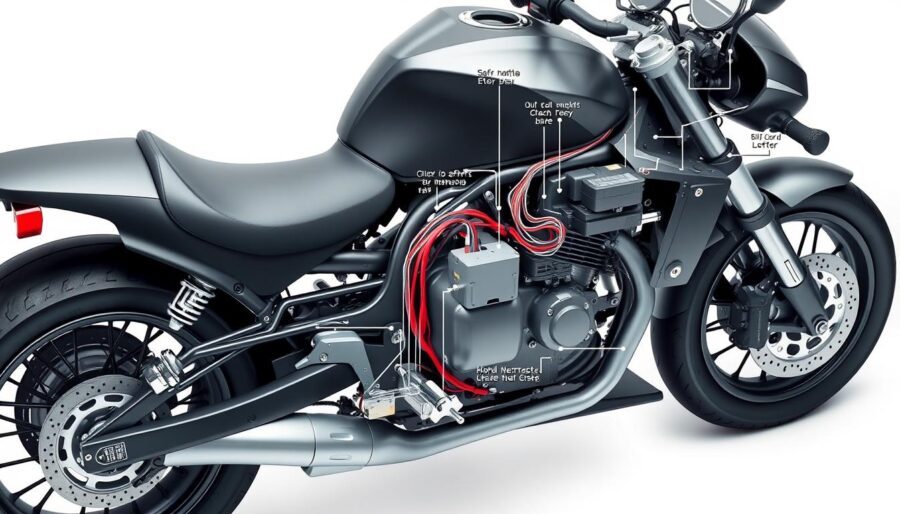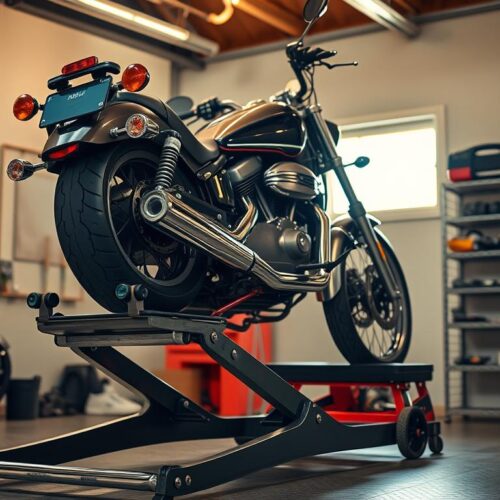Every rider, especially newbies, should grasp their motorcycle’s electrical system. This guide will walk you through the complex wires of your bike. It explains how electricity moves, how parts like the battery and the wiring harness team up, and ways to fix common problems. You’ll also find tools like wiring diagrams and multimeters useful for keeping your motorcycle’s electrical system in top shape.
Understanding the Basics of Motorcycle Electrical Systems
A motorcycle’s electrical system includes key parts like the battery, alternator, wiring harness, and switches. Each electrical component is crucial for the bike’s operation.
To understand these systems, knowing how complete circuits work is key. Electricity needs a continuous loop to flow. Grounding is important as it provides a path for the electricity to return.
Wiring diagrams are very helpful. They show the layout and connections of electrical components in the motorcycle electrical system. Learning the symbols and functions on these diagrams will help you understand basic electrical systems better. This knowledge lets you find and fix problems, keeping your motorcycle running well.
The Role of the Battery in Your Motorcycle
The motorcycle battery is key to your bike’s power. It’s at the heart of the electrical system. It starts the engine and runs things like lights and gauges. Knowing how your battery works can boost your ride’s reliability and performance.
Keeping your battery in good shape is critical. A weak battery can make starting the bike hard. It’s important to check it regularly. You should clean the terminals to avoid corrosion and check the battery’s level often.
To give you a more comprehensive understanding, the table below outlines essential aspects of motorcycle battery maintenance:
| Maintenance Task | Purpose | Frequency |
|---|---|---|
| Check Charge Level | Ensures sufficient power is available for starting | Every month |
| Clean Terminals | Prevents corrosion and poor connections | Every three months |
| Inspect for Damage | Identifies wear or leaks that could lead to battery failure | Every season |
| Test Battery Voltage | Checks battery health and capacity | Twice a year |
Getting to know your motorcycle battery’s role can help you take better care of it. By taking action early, you make sure the electrical system works well.
The Function of the Alternator
The motorcycle alternator is key in your bike’s electrical system. When the engine is on, it creates electricity. This power is crucial for running different parts and keeping the battery full. The main job of the alternator is to make alternating current (AC). This AC is then changed into direct current (DC) by the rectifier. This change keeps your bike’s electrical system working well.
It’s important for every motorcycle owner to know how the alternator works with the charging system. The alternator has magnetic parts that always make electricity when the engine runs. To make sure the battery stays well connected, you need to keep the alternator and its connections in good shape.
To sum it up, the motorcycle alternator does more than just fill up the battery. It also helps run the whole electrical system of your bike. This makes it a vital part for many components that need constant power.

Fuses and Circuit Protection Explained
It’s important to know how motorcycle fuses work. They keep your bike safe by stopping too much current from damaging the wiring. There are many types, like blade, cartridge, and glass fuses. Each kind fits different needs and has its own capacity.
To check your fuses, use a multimeter on the continuity setting. Connect it to both ends of the fuse. If it beeps or shows a reading, the fuse is good. If not, you need a new one. Make sure to use fuses that match your bike’s needs. The wrong fuse can cause electrical problems.
Here’s a comparison of common motorcycle fuse types:
| Fuse Type | Typical Use | Max Current Rating |
|---|---|---|
| Blade Fuse | Most modern motorcycles | 5A to 30A |
| Cartridge Fuse | Older bikes, specialty applications | 10A to 40A |
| Glass Fuse | Historical models | 3A to 30A |
Keep your fuses in good shape for safety. Checking and swapping them out keeps your bike’s electrical system running well.
Wiring Harness: The Backbone of Your Motorcycle
The motorcycle wiring harness is key to your bike’s electrical system. It connects vital parts, ensuring everything works well. A top-notch wiring harness is essential for strong electrical connections in your bike.
Choose materials carefully for your bike’s wiring. Go for thin stranded copper wire which fights off wear and corrosion. This makes your bike’s electrical system more durable and lasting. Good soldering practices are also crucial for a wiring harness to work well. Avoid using home wiring parts, as they’re not tough enough for motorcycle life.
To keep electrical connections in top shape, make sure your connectors are clean and tight. Dirt and water can cause them to corrode, hurting your bike’s electrical system. Checking and caring for your motorcycle’s wiring harness regularly helps keep your rides safe and smooth.
| Component | Material | Function |
|---|---|---|
| Wiring | Copper | Conducts electrical current |
| Connectors | Plastic/Metal | Joins electrical components |
| Solder | Lead-free solder | Joins wires securely |
The Starter System: Getting Your Motorcycle Going
The motorcycle starter system is key to getting your engine started. It includes the starter relay and the electric starter motor. These parts work together to crank the engine when you push the starter button.
If your bike won’t start, the problem could be in the starter system. A stuck starter button or a dead relay can stop your motor from turning on.
To help you figure out what’s wrong, here’s a table with the parts, what they do, and common issues:
| Component | Function | Common Starting Trouble |
|---|---|---|
| Starter Relay | Engages the starter motor by allowing electrical current to flow. | Non-responsive starter button; failure to engage. |
| Starter Motor | Turns the engine over to start it. | Engine cranks slowly or not at all. |
| Battery | Supplies electrical power to the entire starter system. | Dead or weak battery causing starting issues. |
| Wiring Harness | Connects all components and supplies necessary current. | Corroded or damaged wires leading to intermittent issues. |
Knowing how these parts work together helps you fix issues faster. Keeping your motorcycle’s starter system in good shape ensures it’s always ready to go.
Lighting Systems: Safety and Visibility
Visibility is key when you’re on a motorcycle. Good lighting systems make sure you’re seen on the road. These include headlights, taillights, and turn signals. Each has a crucial role in making you visible and telling drivers what you’re about to do.
Headlights light up the road ahead, especially at night or during bad weather. They keep you safe and noticeable. Taillights and signals warn drivers behind you when you’re turning or stopping. This helps avoid accidents, keeping you safe while riding.
Always check your lights for any issues like dimming bulbs or faulty signals. These issues can endanger you. If a bulb goes out, knowing how to fix it is important. Knowing how your bike’s electrical parts work helps keep you safe on every trip.
Understanding Your Motorcycle’s Charging System
Having a good motorcycle charging system is key to keep your battery healthy. It lets all the electrical parts work right. The alternator makes electricity when you run the engine, while the regulator/rectifier changes it to the kind your battery needs. This keeps your battery ready to go and makes sure your bike’s electric systems work well.
If your system doesn’t charge enough, you might end up with dead lights or accessories. It’s smart to check your charging system often. Catching electrical problems early can save you from big troubles later on.
Keeping the battery charged and knowing about the parts involved helps your motorcycle’s electric system last longer. Paying attention to these things means you can enjoy smooth rides and count on your bike.
Troubleshooting Electrical Issues
Starting with a plan is key when fixing electrical issues in your motorcycle. First, check the battery’s voltage. Make sure it’s strong enough for the bike’s demands. Low voltage can cause starting problems and affect performance. It’s also smart to look over all connections. Bad connections, broken solder joints, and rust can lead to electrical mistakes.
Making a checklist can make the job easier. Follow these steps:
- Look at the battery and its connections for damage or rust.
- Use a multimeter to test the battery terminal voltage.
- Ensure all fuses are good and not broken.
- Check the wiring for any worn-out wires or insulation.
- Look for any loose or unconnected wires in the bike’s wiring.
It’s important to carefully figure out electrical problems to avoid guessing or replacing parts that aren’t broken. Write down anything unusual as it may help spot patterns or recurring issues. For fuse problems, check out this motorcycle fuse guide. It explains which fuses affect different parts of the bike. This knowledge will make fixing the bike easier and improve your problem-solving skills.

Upgrading Your Motorcycle’s Electrical Components
Improving your bike starts with its electrical system. By upgrading, your ride becomes more dependable. Changing old batteries is crucial for better power when starting and longer battery life.
It’s important to choose high-quality parts. Yuasa offers great batteries, and Rick’s Motorsport Electrics has top-notch regulators. These can boost your system’s efficiency. Good stators mean your battery charges better, keeping the power steady while riding.
Switching to an electronic ignition system is a smart move. It means less upkeep and more reliability. These systems improve timing and increase your bike’s power and fuel efficiency.
Consider LED lights for better visibility and to save power. Upgrading to LED headlights and taillights makes a big difference. Though it costs upfront, the safety and performance gains are worth it.
Maintenance Tips for Optimal Electrical Performance
Keeping your motorcycle well-maintained is vital for a smooth-running electrical system. It’s especially important to clean your connectors regularly. Dirt and grime can cause bad connections and lead to electrical problems. A clean connector makes the electrical system work better and last longer.
It’s crucial to replace any damaged wires right away. Frayed or cracked wires can lead to shorts and other big issues. Also, check for corrosion often to keep your electrical system reliable. Corrosion blocks electricity flow, so fix it quick to avoid future troubles.
To ensure your bike’s electrical system is at its best, keep your grounding system clean. Bad grounding can cause voltage problems. Writing down any electrical work you do helps you know your bike’s system better. This leads to a smoother ride. Following these maintenance tips will help your motorcycle stay in great shape.




